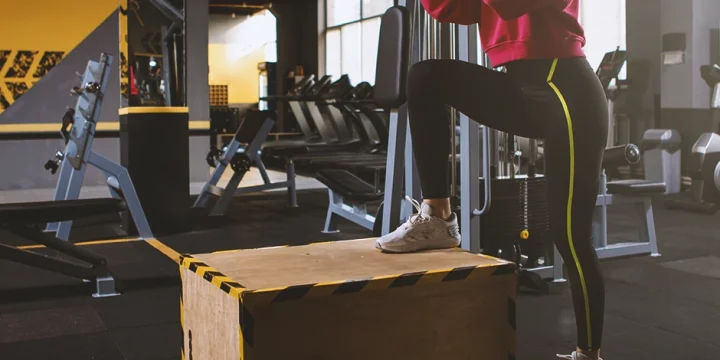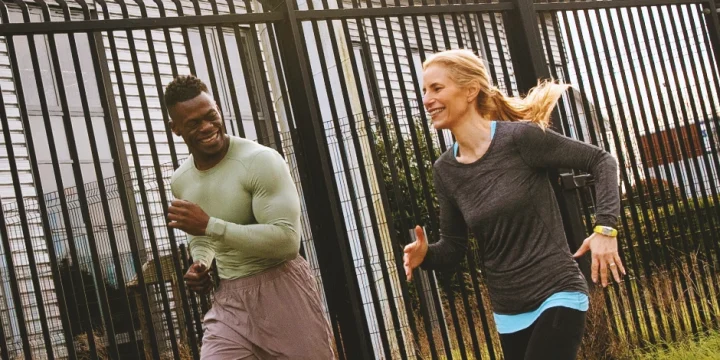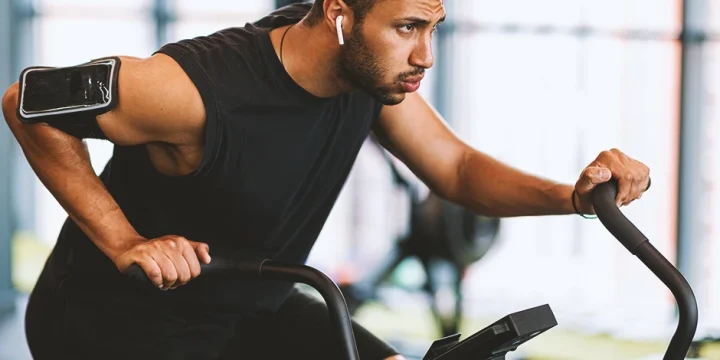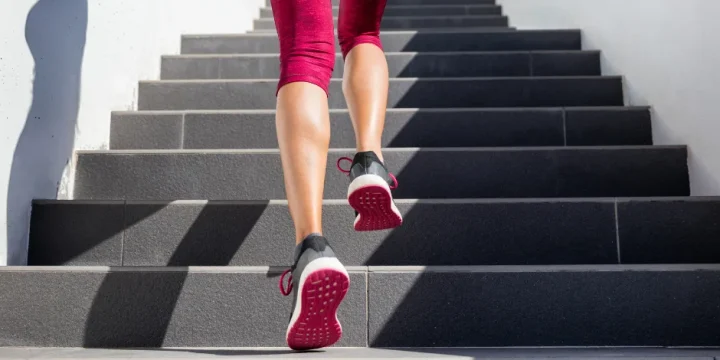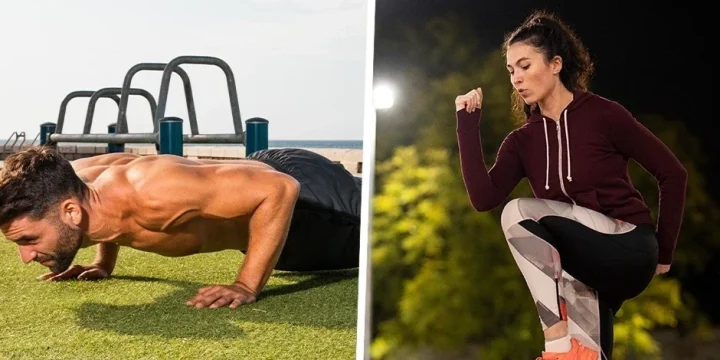Recumbent bikes offer an aerobic form of exercise suitable for all fitness levels, and I have incorporated stationary bike workouts into countless fitness plans for my clients over the years.
Recumbent bike workouts aren’t just for individuals who are old or have chronic back pain or joint issues; they offer a great way to target specific muscle groups and get a challenging low-impact cardio session.
This article will guide you through the best exercises to combine strength and cardio, which worked great for my clients.
Quick Summary
- Steady-state workouts, HIIT recumbent exercise bike workouts, and Tabata on the exercise bike are among the best cardio exercises on the recumbent bike.
- Using a recumbent bike for interval workouts offers a highly efficient way to improve your fat-burning capabilities.
- In a 2004 Europe PMC study, researchers found that recumbent biking helps in ACL injury recovery, involving less knee and hip flexion compared to upright bicycles.
- In my training experience, I've seen recumbent bikes offer a diverse range of low-impact workout programs that, when combined with a healthy diet, contribute to fat burning and weight loss for my clients.
Steady-State Workout

Steady-state workouts on a recumbent bike involve a simple process of getting on the bike and pedaling. Following such sessions, you can enhance your workout routine by incorporating resistance training using kettlebells, body weight, or dumbbells for an effective cardio and strength workout.
Beginner Workout
For beginners, I recommend a slightly challenging recumbent bike exercise with low resistance and speed. Pedal consistently at a low intensity, higher than a leisurely pace, for 15-30 minutes, maintaining comfortable pedal resistance to prevent injury.
Begin with 15 minutes and gradually increase by 5-minute increments as your endurance builds. Once you can manage 30 minutes with minimal effort, progress to the intermediate level workout.
Intermediate Workout
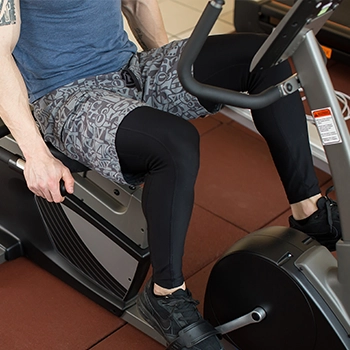
According to the Mayo Clinic, intermediate steady-state recumbent bike workouts escalate intensity and duration, requiring a moderate pedal intensity (50-70% of max heart rate) for 30-45 minutes. Initially, aim for 30 minutes, gradually increasing by 5-minute increments as you progress [1].
Advanced Workout
As your fitness level advances, intensify your workout with the following challenge: Start with a 2-3 minute slow warm-up at lower intensity, then increase pace and resistance, pedaling for 30-60 minutes, inducing a significant sweat. Conclude with a 2-3 minute leisurely pedal cool down.
Tempo & Calisthenics
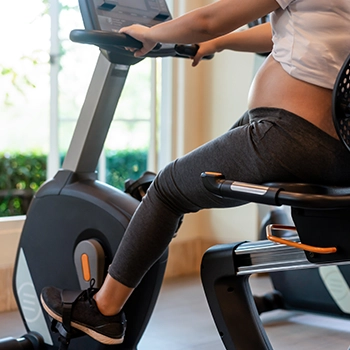
To combat workout monotony, consider a tempo recumbent bike workout, integrating cardio equipment with bodyweight exercises to aid weight loss. This regimen engages the lower body on the bike and targets the core and upper body with calisthenics exercises.
Set One
- Pedal for moderate intensity for 30 seconds.
- Immediately follow up with ten push-ups.
- Take a 30-second rest.
- Repeat a minimum of five times.
- Take a one-minute rest before moving on to set two.
Set Two
- Start again with 30 seconds of medium-intensity pedaling.
- Immediately follow up with ten sit-ups.
- Take a 30-second rest.
- Repeat a minimum of five times.
HIIT Recumbent Exercise Bike Workout

High-intensity interval training (HIIT) is an extremely efficient workout method, and a recumbent bike routine is no exception. A HIIT workout can offer the same benefits as a longer medium-intensity workout, according to research from PubMed [2].
Give this interval training workout a try for your next recumbent bike exercise session:
- Warm up for 2-3 minutes at a steady pace with low to moderate intensity.
- Pedal intensely for 30 seconds, essentially pushing yourself to pedal as hard as possible.
- Ensure proper form during the intense pedal to avoid the risk of injury.
- Follow up with 60 seconds of low-intensity recovery pedal.
- Repeat this cycle for ten rounds.
- Cool down for 2-3 minutes at low to moderate intensity.
For those more experienced:
- Warm up at a lower intensity with medium pedal resistance for four minutes.
- Pedal at total effort, with high resistance for 15 seconds.
- Recover at low resistance for 1 minute and 15 seconds.
- Complete four rounds of this cycle.
- Pedal at total effort, with high resistance for 20 seconds.
- Recover at low resistance for 1 minute and 40 seconds.
- Complete six rounds of this cycle.
“Due to the intensity of the workout, HIIT can elevate your metabolism for hours after exercise. This results in burning additional calories even after you have finished exercising.”
- Tyler Read, BSc, Certified Personal Trainer
Tabata on the Exercise Bike

Similar to traditional high-intensity interval training, Tabata is a highly effective and efficient exercise routine that enhances cardiovascular fitness, promotes muscle gain, and aids in weight loss, especially when combined with a healthy diet.
Give the following Tabata recumbent bike exercise a try:
- Warm up by pedaling moderately with medium resistance for 2-3 minutes.
- Pedal at an all-out effort for 20 seconds.
- Follow the high-intensity bursts with 10 seconds of recovery at a low-intensity pedal.
- Repeat this cycle for eight rounds.
- Cool down by pedaling at a moderate pace for 2-3 minutes.
In my experience as a fitness trainer working with clients, I've found that despite the short duration of the Tabata interval workout, it's essentially a more intense form of interval training. It offers a highly effective workout and is perfect for those days when time on the recumbent exercise bike is limited.
Upright Versus Recumbent Bikes

Upright and recumbent bikes both provide effective, low-impact workouts, setting them apart from other cardio equipment like treadmills.
Recumbent bike cycling is gentle on the ankles, knees, and hips, especially when compared to activities such as running and plyometrics. Unlike stationary bikes, recumbent bikes enable users to exercise without leaning forward, thanks to their unique design featuring a larger seat and back support.
The undeniable benefits of biking encompass calorie burning, aiding in weight loss, and engaging the lower body effectively. While upright bikes intensively target core muscles, research from PubMed indicates that recumbent bike workouts specifically focus on two muscles: the semitendinosus in the hamstring and the tibialis anterior in the shin [3].
Related Articles:
Tips for Exercise on a Bike

As with any form of exercise, there are things you can do to maximize your workout efforts.
1. Stretching
Including stretching in your routine is crucial, regardless of your experience level. Dynamic stretching, which involves movement during stretching to improve blood flow, warm up muscles, and achieve a full range of motion, is especially effective.
In my experience as a fitness trainer, I've found that dedicating five minutes to a mix of lower and upper body movements, like toe touches and trunk rotations, can really boost your training session.
Related: Static vs Dynamic Stretching
2. Adjust the Seat
As a training tip for adjusting the seat on a bike, ensure that your extended leg is slightly bent. Avoid overextending your leg during pedaling to prevent the risk of knee pain or other injuries. Making proper seat adjustments is crucial for maintaining comfort and reducing the likelihood of physical strain during your workout.
3. Warm Up and Cool Down
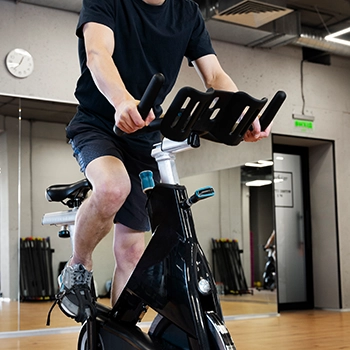
Avoid sudden shifts into or out of high-intensity cycling. Start and finish each session with a brief period of low-resistance and slow-paced pedaling. Warming up helps loosen the legs and raises the core temperature, preparing for more intense exercise. Similarly, cooling down is crucial for gradually returning heart rate and blood pressure to normal levels after the workout.
4. Supplements
As a fitness trainer, I've discovered that including a post-training supplement significantly enhances muscle gain and recovery. Specifically, integrating pre-workout supplements before physical activity has proven to be a game-changer in boosting energy and focus for my clients, as supported by research from the International Society of Sports Nutrition [4].
FAQs
How Long Should You Work Out on a Recumbent Bike?
How long you should work out on a recumbent bike depends on your fitness level and goals. For a complete cardio workout, a half hour is an excellent place to begin, and you can increase exercise duration over time.
What Are the Disadvantages of a Recumbent Bike?
One of the major disadvantages of a recumbent bike is that it does not work the core as well as an upright bike. Additionally, recumbent bikes take up more space than upright bikes.
References:
- https://www.mayoclinic.org/healthy-lifestyle/fitness/in-depth/exercise-intensity/art-20046887
- https://pubmed.ncbi.nlm.nih.gov/27368057/
- https://pubmed.ncbi.nlm.nih.gov/24567858/
- https://www.tandfonline.com/doi/full/10.1186/s12970-017-0177-8
About The Author
You May Also Like
